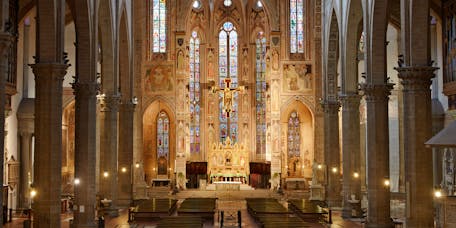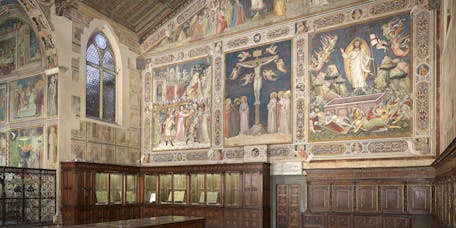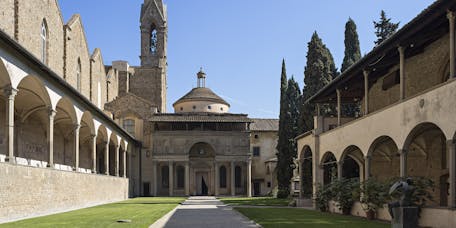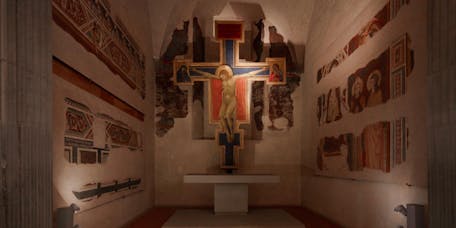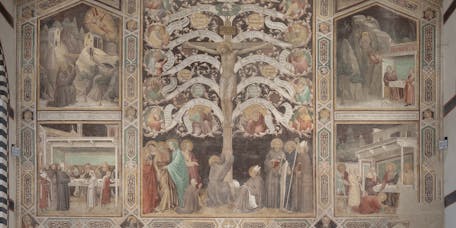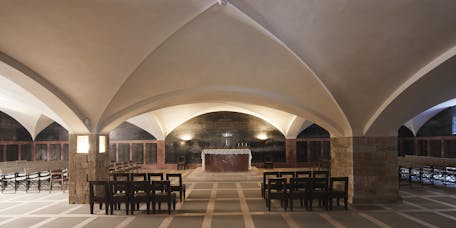The places
Over the past eight centuries the complex's spaces have changed fairly constantly. The basilica has been renovated on many occasions, especially with a view to housing the funeral monuments that have made Santa Croce the "temple of Italy's glories". The areas of the old convent such as the Novitiate Corridor and the Cenacolo, or former refectory, have been redesigned to protect masterpieces such as Cimabue's Crucifix and Vasari's Last Supper from the risk of flood damage. And the undercroft has been dedicated to the memory of Florentines killed in the two World Wars.
